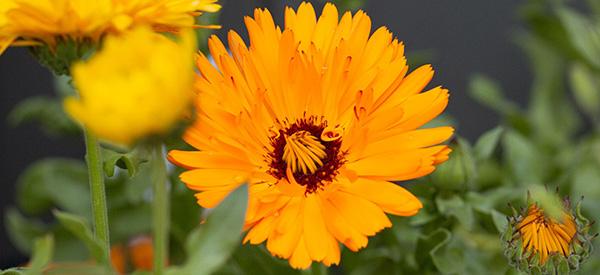
Calendula
Calendula (Calendula officinalis) is a perennial that is part of the Asteraceae family along with daisies and chrysanthemums. The common name is, confusingly, pot marigold. Calendula and marigolds in fact belong to different plant families.
Although it is categorized as a short-lived perennial, it is grown as an annual in gardens and plant containers. These compact plants usually have bright yellow or orange flowers, but there are now many varieties some of which have cream or white blooms.
Calendula has historically had culinary and medicinal uses with the latter enjoying a revival.
The History of Calendula
Unlike many of the health-giving plants we are familiar with, Calendula does not have a long history as a medicinal plant. However, it had a range of ceremonial, magical, mystical, and culinary uses.
Records from Ancient Greece and Rome indicate that Calendula was used to make garlands or crowns of flowers to be worn during rituals of various kinds. These blooms are viewed as sacred in India and have decorated Hindu temples and statues of deities. In the 16th century Europe it was thought that a potion that included Calendula could reveal both fairies and a love match.
When the plant was used as a medicinal one it was believed to ease headaches, toothache, eye irritations, and fever.
Where This Plant is Found
Calendula officinalis is thought to be native to the Mediterranean, Macaronesia (the Azores, Madeira, and Canaries islands), southwestern Asia, and western Europe.
Thanks to how easy it is to grow and what a prolific bloomer it is, this plant has now been naturalized throughout southern Europe and large parts of the US and southern Africa.
Related: The Complete Map of Edible Plants: Find Out What You Have in Your Area! (Video)
How to Identify Calendula
Calendula is not a large plant and is therefore ideal for borders or containers. Fully grown, mature plants reach a height and width of 1 – 2 feet or 30 ½ – 61 centimeters. Overall Calendula is not difficult to identify.
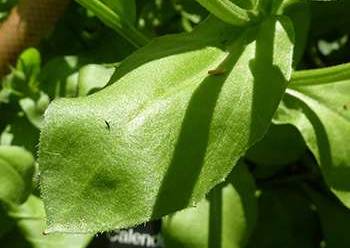
- Leaf: The leaves are light green, hairy, sparsely toothed, broader at the base, and taper to a point.
They are arranged alternately along the stem. The leaves do not have stalks but grow from the stem.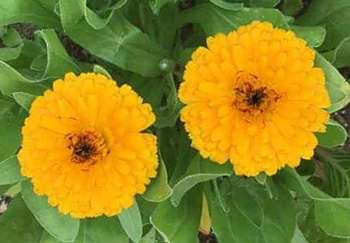
- Stems: The stems are light green, erect, sparingly branched, hairy, and have a strong smell when crushed or cut.
- Flower: Flowering season is late spring to early fall and regular deadheading prolongs blooming times.
Each flower appears on a single erect stem.
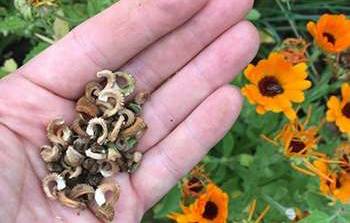 Blooms are deep orange or bright yellow with yellow, red, or even purple centers. Flowers close at night.
Blooms are deep orange or bright yellow with yellow, red, or even purple centers. Flowers close at night.
- Fruit & seeds: The spent flower forms a fruit or pod that dries to a pale yellowy-brown and contains seeds.
The seeds are grey or brown, curled, and spiked on the outer surface.
While there may be a degree of hesitation about identifying Calendula when plants are young, once the flowers emerge identification is easy.
How to Grow Calendula
Calendula officinalis loves full sun but can tolerate semi-shade if the climate/weather is warm. Well-drained soil that is high in organic material will lead to healthy plant growth. However, these plants can tolerate a wide range of soil pH and occasional watering once they are established.
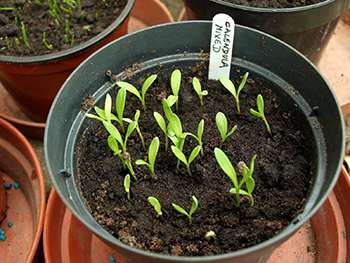
You can simply let your Calendula plants self-seed, or you can collect seeds and use them to propagate for the following season. You can either sow into containers or directly into the soil in your garden. Indoor propagation should begin 6 – 8 weeks before the last spring frosts are due. Alternatively, plant them outdoors a few days before the last frost.
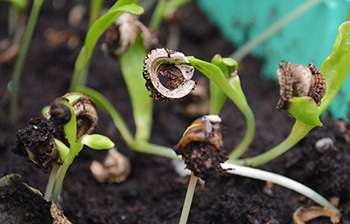
The seeds must be covered with ½ inch or 1 ½ centimeter of soil or germination will not occur.
If you purchase plugs or seedlings online or from a garden center or plant nursery, don’t plant Calendula out until the frosts are over. Give them a little compost when you plant them and water them regularly until they settle. These plants don’t require fertilizer after planting.
You can use a container if you don’t have a garden or balcony as Calendula is quite happy growing in a pot or window box. However, there must be adequate drainage holes and you must water and feed the plants monthly. Don’t overfeed or the plants become spindly and the blooms decrease in size and number.
Get Your Own Calendula Seeds, Last 30 Packs Left
How to Harvest This Plant
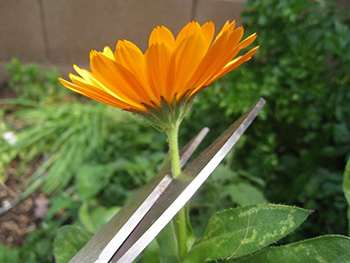 Harvesting Calendula flowers is best done:
Harvesting Calendula flowers is best done:
- In the early morning after any dew has dried
- On a warm or hot day
- When the flower is fully open
- Throughout flowering season
- By cutting off the stem just above the next flower bud.
Once you have cut the blooms, you need to process them (see later section).
What Calendula is Good For And The Natural Remedies Made With it
The most common use for Calendula is topical and it is used in the form of oil, lotions, salve, toner, and cream/ointment. This is in large part due to the antibacterial and inflammatory properties this plant is believed to have. Far less popular health preparations include tincture and tea in extremely low doses.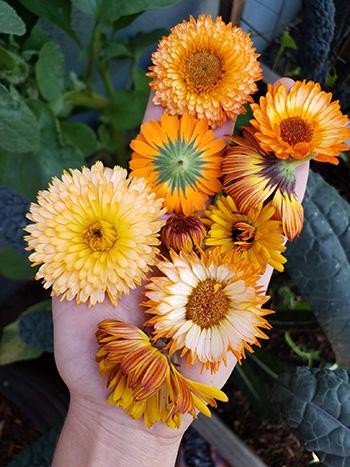
These various remedies are used for:
- Minor wounds
- Superficial burns and sunburn
- Dry and itchy skin
- Insect bites and stings
- Easing hemorrhoids
When taken internally as a tea or diluted tincture, Calendula may ease constipation and abdominal cramps and boost the immune system.
Calendula Seeds: Last Minute Deal
What Parts of The Plant Are Used in Remedies?
With Calendula it is only the flowers that are used in both medicinal preparations and for cooking and fabric dying. The leaves, stems, and roots appear to be of no use.
DIY Calendula Recipes
There are two forms of Calendula that are most useful: infused oil and salve/ointment. In addition to being valuable on its own, infused oil is a vital ingredient in a salve. Both remedies have several topical applications.
Calendula Infused Oil
Ingredients
- Calendula flowers or petals
- Carrier oil.

When it comes to carrier oils, the best are high-quality, organic, cold-pressed oils. You can select from Grapeseed, Jojoba, Sweet Almond, Rosehip Seed, Extra Virgin Olive, Avocado, Hemp Seed, Argan / Moroccan, or Sunflower.
Equipment
- Glass jar with lid / airtight cover
- Cheesecloth or cooking muslin
- Adhesive label.
Method
- Fill the jar ¾ full of flower heads OR ½ full of loose petals
- Pour the oil over the Calendula until all the plant material is covered

*Any pet can also benefit from a salve or oil made from calendula. It can be used to help heal minor cuts, scrapes, and even minor burns.
Related: Herbal Remedies for Pets
- Stir the contents gently so that all the petals are coated with oil
- Secure the lid and label the jar (name and date)
- Place the jar in a warm sunny place
- Leave the mixture to infuse for 3 to 8 weeks
- Strain the oil through muslin or cheesecloth to remove all the plant debris, and squeeze the cloth to remove all the oil
- Place the oil in a clean, labeled jar or dropper bottle with a lid.

Storage and Shelf-life
Store the oil in a dry, cool place. The shelf-life should be the same as that of the carrier oil you used so check that. You can extend this period slightly by storing the infused oil in the refrigerator.
Calendula Salve
Ingredients
- 1 cup Calendula infused oil
- 3 – 4 tablespoons of beeswax pellets
- Optional: 4 – 5 drops of essential oil of your choice
Equipment
- A double-boiler OR a metal or heat resistant glass bowl and small saucepan
- Suitable jars or tins
Method
- Add water to the bottom of the double-boiler or saucepan
- Pour in the oil and add the beeswax

- Heat the oil slowly over low to medium heat

- Stir or swirl the mixture until the beeswax melts completely

- Remove from the heat and leave for 1 minute
- Pour the liquid salve into the jars or tins

- Leave the containers open and undisturbed to cool and set

- Place the lids and labels on the jars/tins.

Apply a small amount of salve using a clean cotton bud or fingertip to the affected area as needed.
Get your Own All-Purpose Salve here (Nicole Apothecary)
Storage and Shelf-Life
Store the Calendula salve in a dark, cool place to both stops the salve from becoming more liquid and prolong its life. Homemade salves like this should last up to 24 months but may lose some potency.
Dosage
It’s not easy to give clinical dosage information because of the lack of studies. Generally, how much to use is determined by several factors including:
- The individual’s state of health
- The person’s age
- The type of preparation being used
- What ailment is being treated?
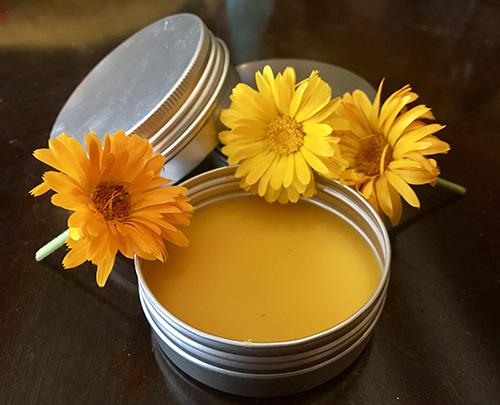
If you purchase a Calendula product, ensure that you only do so from a reputable health outlet and that you follow the use and dose instructions on the packaging.
Optional Recipe: How to Make Your Own Calendula Tincture
How to Preserve This Plant
With calendula, the focus is the flowers. These can be preserved by drying, freezing, infusing, or tincturing. The optimal method with these blooms is drying as this best retains their medicinal properties. The other methods can cause the flowers to lose potency. Drying Calendula flowers is straightforward:
- Spread out the flower heads on a drying screen, wire mesh, or suitable cloth
- Arrange the blooms so that the layer is as thin as possible
- Place the screen/cloth/rack in a well ventilated, shaded place
- Turn or move the flowers around regularly so all the plant material is exposed to air
- When the flowers/petals are dry and crisp to the touch place them in airtight, labeled containers
- Store the containers in a dark, dry place.

Don’t wash the flowers as this will greatly increase the chances of the flowers molding or getting mildewed before they dry. Correctly dried and stored, the plant material should stay fresh and potent for about 6 months.
What Plants Resemble Calendula?
Because Calendula is referred to as Pot Marigold and both are sun-loving and colorful members of the sunflower or Asteraceae family, the two are sometimes confused. However, the differences are more extensive than the similarities.
Calendula
| Feature | CalendulaGenus Calendula with +- 20 species | MarigoldGenus Tagetes with +- 50 species |
|---|---|---|
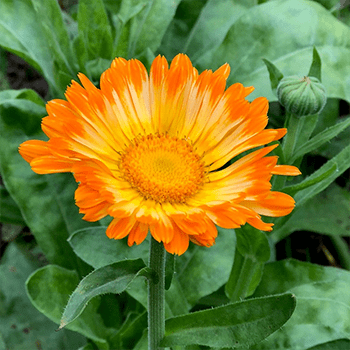 |
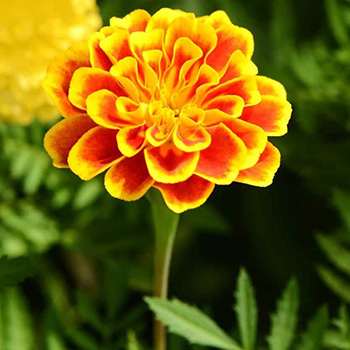 | |
| Size | Height of 12 – 24 inches / 30 – 60 centimeters | Height of 6 inches – 4 feet / 15 centimeters – 1.25 meters |
| Leaves | Oblong, lanceolate, light green, hairy | Pinnate, dark to light green, smooth |
| Flowers:· Shape | Flat blooms with long, straight petals | · Rounded with wavy, rectangular petals |
| Flowers:· Color | Orange or yellow, and occasionally pink or white | Orange, yellow, red, cream, or white |
| Aroma | Slightly sweet and pleasant | Pungent and unpleasant |
| Seeds | Curved, light brown or grey, bumpy/spiky | Straight, black with white, tufted tips |
| Toxicity | All parts of the plant are edible | Some varieties are not edible |
If you are unsure, don’t ingest or make use of a plant in case it does not offer the properties you anticipate or – far worse – is harmful.
Warning And Cautions
Although caution should be exercised by anyone introducing a new remedy, including a natural one, some individuals should avoid Calendula:
- Those who are allergic to chrysanthemums, marigolds, daisies, ragweed, or any other members of the Asteraceae / Compositae family
- Women who are pregnant or breastfeeding
- Anyone who is scheduled for surgery
- Those on sedative medications.
If you have any concerns, consult your healthcare practitioner first before beginning to use Calendula internally or topically. Similarly, if you experience any adverse reactions after doing so, seek advice and assistance.
You may also like:
How To Make a Powerful Calendula Extract to Keep in Your Medicine Cabinet
Similar to Morphine: The Best Natural Painkiller that Grows in Your Backyard (Video)
10 Natural Remedies You Can Only Make This Winter
How to Make an Arthritis Tincture
How to Make a Chaparral Salve for Wounds And Skin Infections






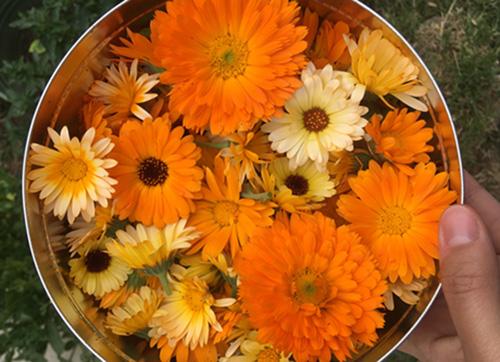
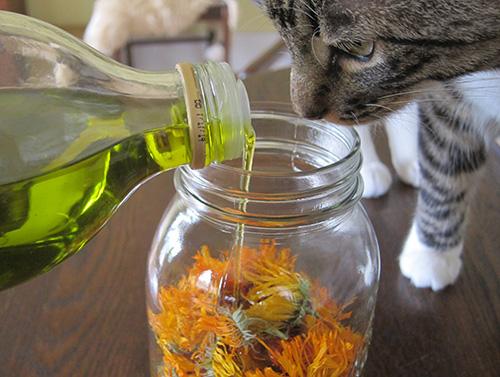
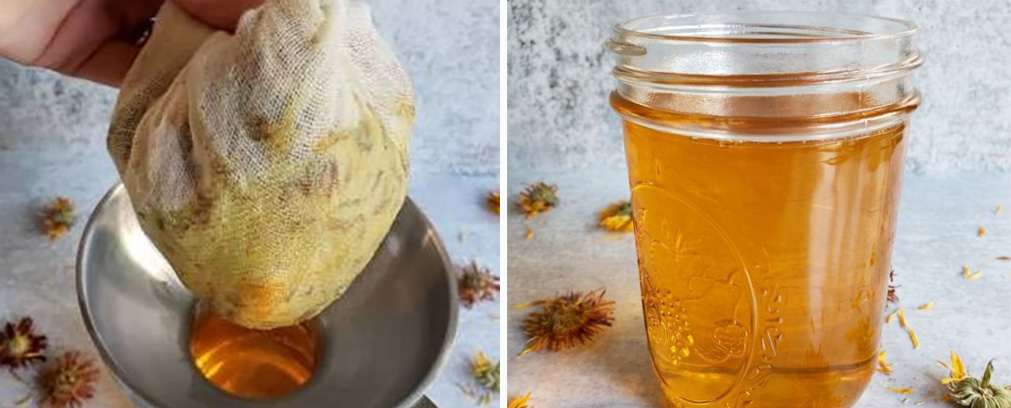
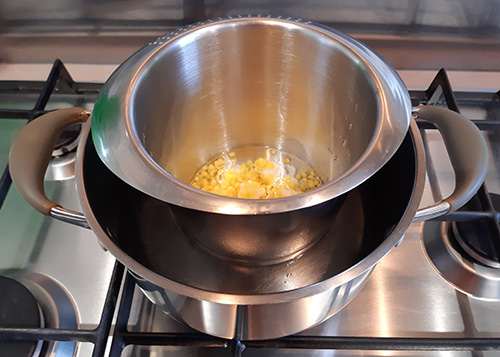
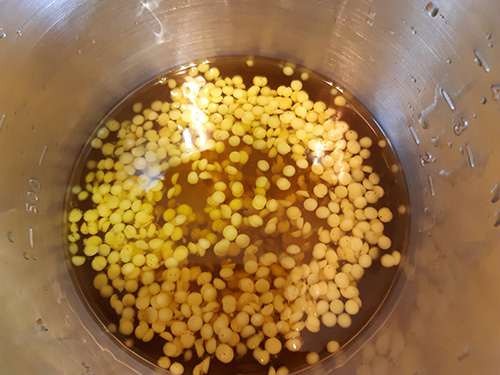
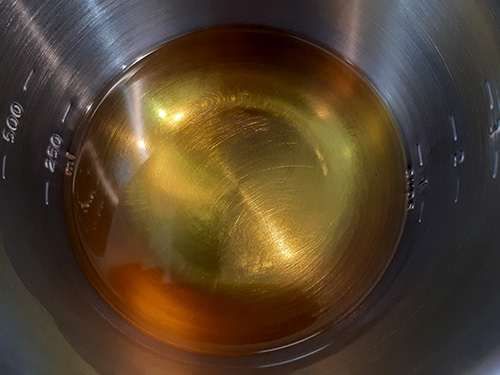
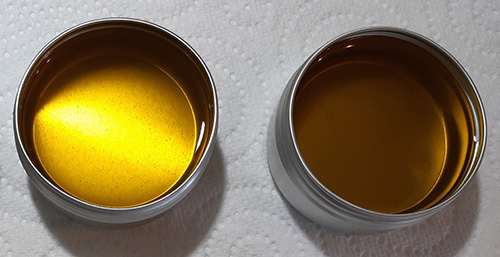
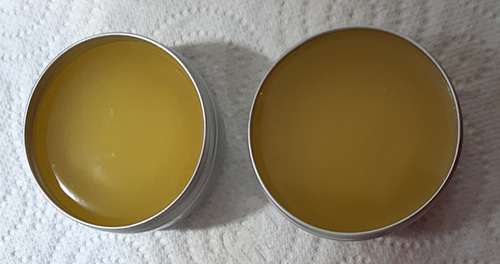
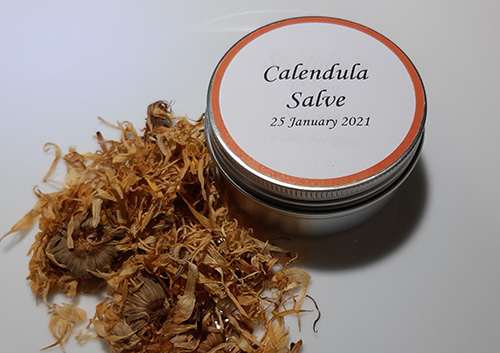
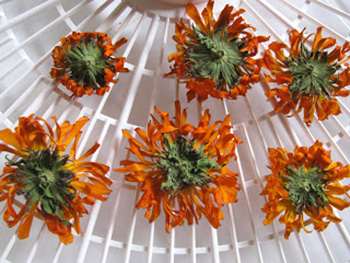
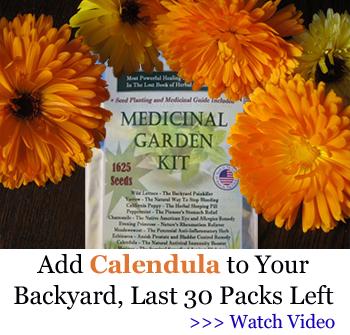
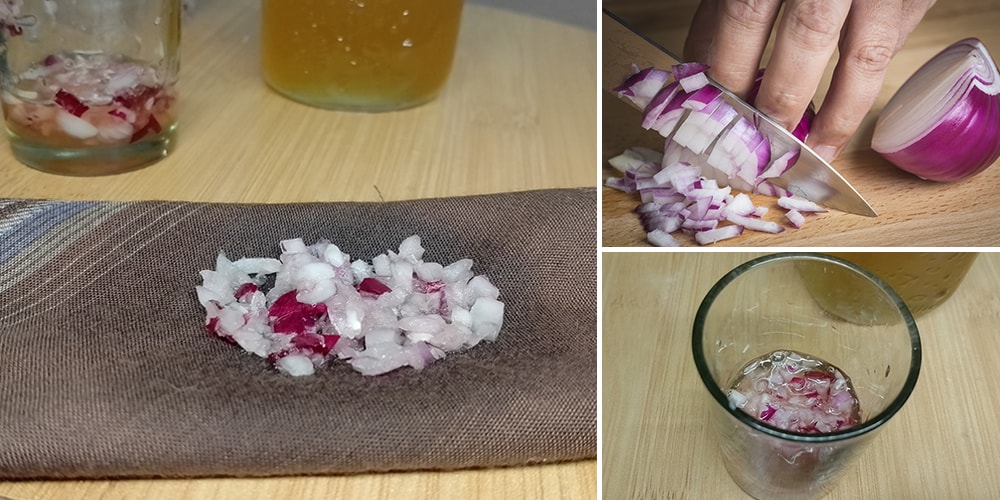
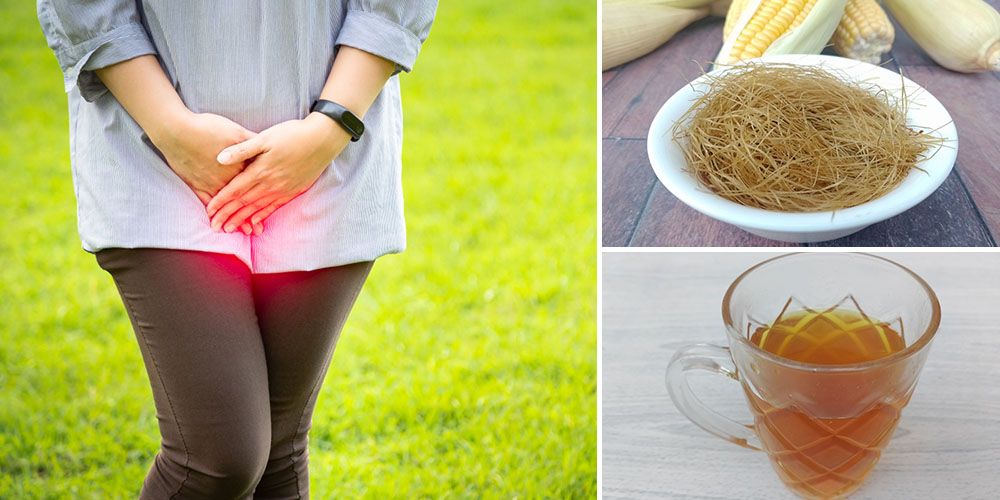
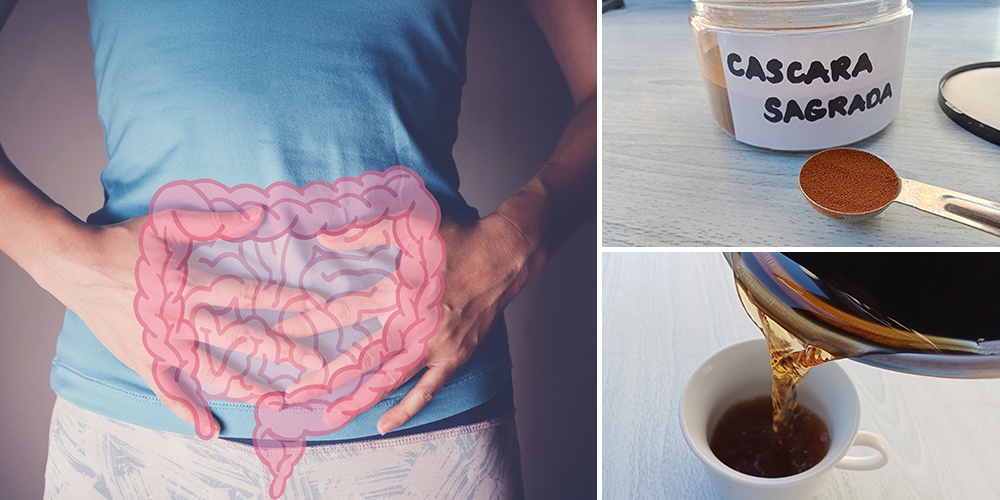
Thank you for this very inspiring & informative article on Calendula.
what is the tinture used for mostly..I know about the salve..But tinture for internal use?
Minor wounds
Superficial burns and sunburn
Dry and itchy skin
Insect bites and stings
Easing hemorrhoids
Your video on how to make calendula tincture actually show marigold flowers not calendulas.
Hi all and to Nicole I got your book on sat that just went by I have not look at it yet I have been looking at all the other stuff I got I just want to know why we are not getting books you know if this goes down at any time I can louse my book I would rather have a book instead of the E-book why is this happening? I just want to know why? for know reason I do not want to louse my book I payed $37 for thank you Nicole I have been looking at some of your things on here you are a beautiful person and why I got the book I am ill as well they do not know what is roung with me I have really bad pain throw out my body some times I can not take it no longer I just want to give up and I found you thank you. truly Paula.
Hi Nicole, do the leaves also have medicinal properties and can they also be used as a whole plant cream or salve?
Hello
I am ready to make a Calendula oil and would like to use your recipe here.
Are the flowers dried first when filling the mason jar 3/4 full or can they be taken directly from garden to jar and oil poured on them ??